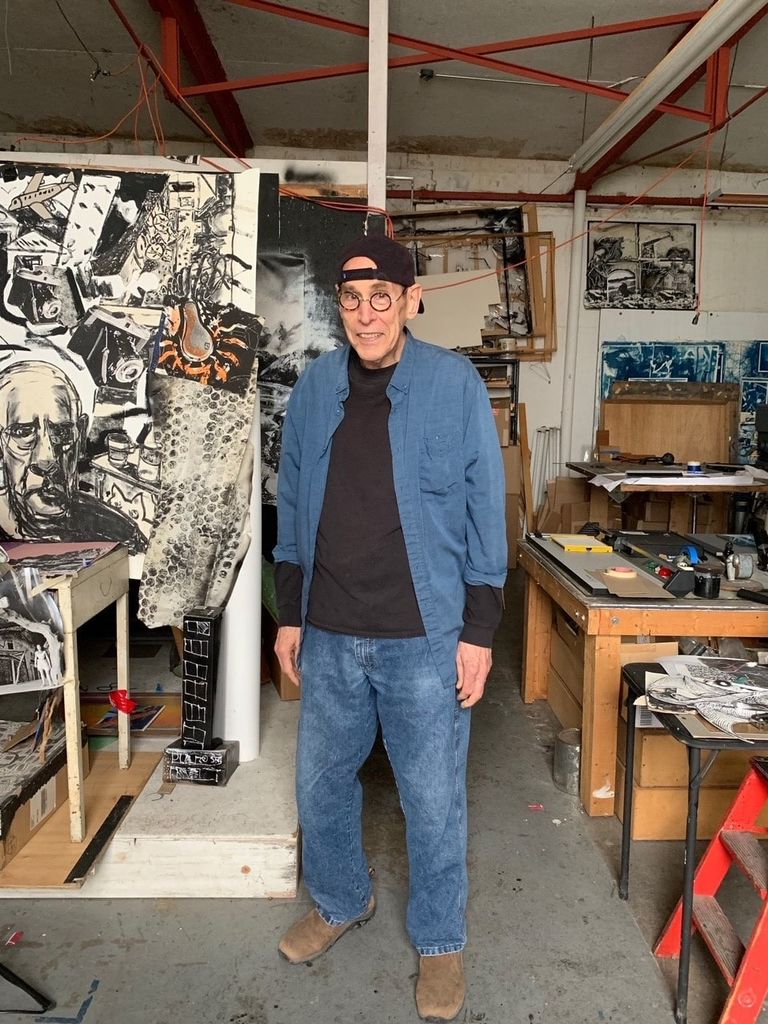Rik was such a multifaceted person that you could know him for decades and still not know everything about him. To his kids and grandkids, he was their ever-supportive and caring Pop. To his students, he provided just the right combination of hands-on and hands-off instruction. To his friends, he was a loyal albeit reclusive companion, sharing a wry wit and a quiet sense of humor. To everyone in his life, whether he encountered them for only a minute or knew them for decades, he was kind, deeply thoughtful, and listened more than he talked. He never did say much, but you could definitely tell when Rik liked you.
Rik would take an interest in a creative endeavor and then work at it daily and doggedly until he was excellent at it. In his lifetime, he built violins, violas, and cellos; he was a passionate windsurfer, especially thrilled when Kansas’ famous high winds would whip up waves on its biggest reservoirs; he worked on his own cars up through the nineties; he taught himself myriad photographic processes and was continually refining his photographic skills until late into his life; and he was beloved by his students at the University of Kansas for the depth of his knowledge and his reserved yet observant teaching style.
Rik always said that had his family not moved away from Iowa, where he was born, he might have become a race car driver instead of an artist. Though not really into sports, Rik loved watching car races and boxing on television. He claimed that NASCAR had gotten “too safe”, so it was less fun to watch. His interest in the visual arts started at quite a young age, too; his grade cards from elementary school are telling. A’s in every art class; C’s and worse everywhere else. Luckily, his teachers saw his artistic talent and encouraged him to pursue it, though he joked that they often relied on him to create posters and other materials for their classes without renumeration.
It was looking unlikely that an MFA in fine arts was going to end up becoming a paying career when Rik was offered a temporary teaching position at the University of Kansas for Fall of 1968. The rest is literally history; Rik must have impressed KU, because his contracts were renewed; the acting chair of the department of drawing and painting became a lifelong friend; and the department itself in the late 1960s and 1970s became well-renowned for its quality faculty and the graduates it produced. The art scene in Lawrence during that time was vibrant and unparalleled, driven by the University and support from the local community. Kansas, of all places, hosted a world-class art scene, and Rik was integral to that. He taught at the university for 43 years, and was made professor emeritus in painting for his exceptional contributions to the department.
Some people knew Rik best as a musician, but he always downplayed his musical talents, choosing instead to delve into instrument making for a short while in the late 1970s and early 1980s. As with anything he studied, he mastered the art of making fine instruments from trees to tuning pegs. To this day, his violins and violas are still being played by dozens of musicians throughout the country. Rik was especially proud that his grandson plays one of the few cellos that he ever produced — and he plays it well. To his bass-playing kid’s chagrin, though, he never did end up building a contrabass. The scale of such an instrument is exponential compared to even a full-sized cello.
Throughout his artistic career, Rik worked in almost every medium available for painting and drawing, including acrylics, oil, charcoal, pencil, printing processes, lithography and even xerography. Later in his career, his passion for pre-digital photography and printing came to the forefront. He could be seen lugging big, wooden box cameras around North Lawrence, where his studio was located, often taking photos of his beloved Kansas River. Large-format photography and printing, along with diorama and collage, made up most of his work later in life. He was skilled with everything from pinhole cameras to ground-glass lenses from the 1860s. Digital photography never entered the picture; though he was a dad with an iPad, he took maybe one cat photo with it, ever. One.
Some of Rik’s works are scheduled to be placed in art shows in the coming years thanks to the tireless efforts of the Lawrence Lithography workshop. It is expected that Rik will have a piece submitted to the Library of Congress, and he has a piece in the Nelson Atkins’ collection. Rik’s kids are hoping to hold a small retrospective of some of his later works at a venue still to be decided once pandemic restrictions are eased.
There is no memorial service, per Rik’s wishes, but a celebration of his life with his friends and family is in the works for mid-2022. This will probably be held at Clinton Lake, a place he truly loved.
The family encourages friends, colleagues, students, neighbors, and anyone whose lives Rik touched to continue to share their memories with them and to continue to celebrate Rik in creative and thoughtful ways. His kids will be collecting stories, photographs, and other shared memories on a blog that will be maintained and updated regularly. Rik wasn’t digital, but his eldest kid does know their way around WordPress fairly well.
Rik loved animals and donated to the local animal shelter regularly. He always said he avoided going to the shelter in person, though, because he would want to bring every single animal home. The family heartily encourages donations to the Lawrence Humane Society in his memory. These donations may be sent in care of Warren-McElwain Mortuary, 120 W. 13th Street, Lawrence, KS 66044.
Guestbook
Visits: 50
This site is protected by reCAPTCHA and the
Google Privacy Policy and Terms of Service apply.
Service map data © OpenStreetMap contributors





